From the early Middle Ages onwards, the practice of witchcraft was condemned as heretical by leading religious figures in the western world. This led to widespread persecution of those deemed to be witches, often women on the fringes of society. The first witch trials in colonial Massachusetts took place as far back as the late 1640s but were subsequently overshadowed by the infamous events that occurred 50 years or so later in Salem.
In early 1692, several young girls in Salem began to exhibit a strange set of symptoms including convulsions, vomiting and delusions. Unable to determine the real cause, a local doctor declared them to have been “bewitched,” triggering mass local hysteria that prompted a witch hunt and ultimately led to the deaths of more than 20 innocent people.
Over a 15-month period between February 1692 and May 1693, some 200 local inhabitants from Salem and the surrounding area were accused of witchcraft. Nineteen of them were found guilty and executed by hanging, whilst another unfortunate man died under torture. At least five more died in jail awaiting trial as a consequence of the appalling conditions in which they were kept. Those found guilty were convicted on highly circumstantial evidence and within two decades a bill was passed, declaring nearly all of the condemned to have been innocent of their alleged crimes.
The story of the Salem Witch Trials has captured the public imagination ever since and has also inspired some captivating works of fiction on the subject. When Arthur Miller’s The Crucible opened on Broadway in 1953, the play rekindled such huge public interest that it kickstarted the modern tourist industry in Salem.
Here are some of our own favorite novels based on events surrounding the Salem Witch Trials. Some predate Miller’s play, whilst others offer a more modern fictional take on what happened in Salem during those dark days of 1692/93.

The House of the Seven Gables
Dealing with universal themes like guilt and redemption, Nathaniel Hawthorne’s 1851 gothic novel, The House of the Seven Gables, takes its inspiration from the prominent role played by one of the author’s own ancestors in the Salem Witch Trials.
The fictional Pyncheon family, who own the gloomy rundown mansion of the title (based on a real-life gabled house in Salem owned by one of Hawthorne’s cousins), are cursed for all time after wrongfully taking the land on which it is built from one of those hanged for witchcraft during the Salem Witch Trials.
The action then switches to the mid-19th-century, when ex-convict Clifford Pyncheon returns to live with his impoverished sister, Hepzibah, at the family’s decrepit ancestral home in Salem. The Pyncheons continue to be weighed down by the ancient curse, which now threatens to doom the family forever, until hope arrives in the form of a young cousin named Phoebe.
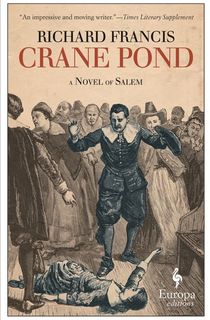
Crane Pond
Most fictional accounts look at events in Salem from the perspective of the accused, but Richard Francis’ “entertaining and stimulating” novel (Spectator) tells the story of the Witch Trials from the point of view of Samuel Sewall, the only one of the presiding judges to apologize subsequently for his role in the proceedings.
Francis had previously published an authoritative biography on Sewall. Here, he's utilized his extensive knowledge on the topic to produce this empathetic and nuanced portrait of a deeply complex man who found himself unwittingly caught up in one of the most infamous miscarriages of justice in US history.
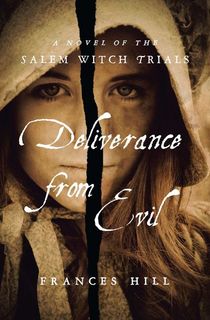
Deliverance From Evil
George Burroughs, who is among the best remembered victims of the Salem Witch Trials, is the central character in Frances Hill’s gripping novel, Deliverance From Evil. Burroughs previously served as a church minister in Salem, but left in acrimonious circumstances after falling into debt. By 1692, he has started a fresh life as a preacher in Maine only to find himself unexpectedly caught up in the turbulent events taking place in his former hometown when some of his former enemies seize the opportunity to settle old scores.
Praised for her ability to “get into the minds and souls of those involved based, for the most part, on real people” (Daily Mail), Frances Hill proves particularly adept at combining deep historical understanding of the root causes of the Salem Witch Trials with an insight into the terrible price paid by those caught up unwittingly in the unfolding events.

The Last Witchfinder
Schooled in the natural sciences by her beloved Aunt Isobel, Jennet Stearne vows to put an end to the practice of witch hunting when her beloved aunt is wrongly accused of witchcraft and put to death. Set in the late 1600s, James Morrow’s whimsical novel chronicles Jennet’s subsequent “grand picaresque tour of England and the American colonies” (Washington Post) in pursuit of her endeavor. Along the way, she ends up in Salem, along with her father and brother who are themselves witchfinders, at the time of the infamous trials.
James Morrow’s inventive novel combines humor and satire with some fascinating historical and philosophical insights into the contrast between the superstitious world of the medieval age and the new era of scientific enlightenment pioneered by the likes of Isaac Newton in the late 17th century.

I, Tituba, Black Witch of Salem
When the acclaimed Guadeloupean novelist, Maryse Condé, died earlier this year, she left behind an extraordinary collection of literary work including I, Tituba, Black Witch of Salem.
Translated into English by Richard Philcox, this powerful 1986 novel is based on the real-life experiences of an enslaved woman who was one of the first to be accused of witchcraft in Salem. Little is known about the real-life Tituba, but here Condé provides her with a vividly drawn backstory, as well as reinterpreting the events surrounding the Salem Witch Trials to provide “a haunting and powerful reminder of the dangers of intolerance of differences” (New York Times Book Review)
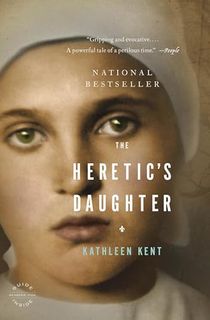
The Heretic's Daughter: A Novel
Kathleen Kent’s bestselling debut novel, The Heretic’s Daughter, is inspired by her own family history; her ancestor, Martha Carrier, was hanged as a witch in Salem in August 1692.
Told from the perspective of Martha’s daughter, Sarah, the author vividly recreates her ancestor’s fateful story amid the suffocating atmosphere of suspicion and paranoia which swept through Salem during those dark times. Kent also excels in her exploration of the complex relationship experienced between Martha and Sarah in this “authentically moving story that is as much about a mother and daughter as the terror of the times” (NY Daily News).
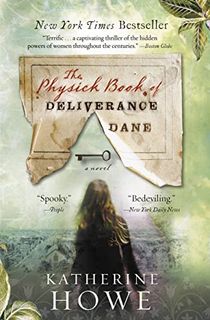
The Physick Book of Deliverance Dane
In modern-day Massachusetts, Harvard graduate student, Connie Goodwin, is clearing out her grandmother’s former home near Salem when she finds an intriguing fragment of ancient parchment inscribed with the name “Deliverance Dane.” Her desire to learn more about this mysterious woman leads her to an even greater discovery: the existence of Deliverance Dane’s “Physick Book,” an incredibly rare volume of ancient spells. As Connie finds herself in a race against time to find this precious artifact before other darker forces can lay their hands on it, she becomes increasingly haunted by visions of the horrifying events that took place in Salem in 1692.
Moving seamlessly between the present-day story and late 17th-century Salem at the time of the Witch Trials, Katherine Howe’s spellbinding debut novel represents a “captivating thriller of the hidden powers of women throughout the centuries” (Boston Globe).
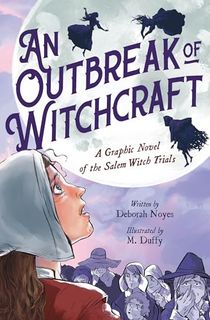
An Outbreak of Witchcraft: A Graphic Novel of the Salem Witch Trials
Published earlier this year, this narrative nonfiction graphic novel provides an engaging introduction to the Salem Witch Trials and will appeal to a wide range of age groups from young adults upwards.
Combining Deborah Noyes’ gripping narrative with M. Duffy’s vividly imagined illustrations, An Outbreak of Witchcraft is packed full of fascinating historical background and portrays all of the key characters and events in this “haunting representation of a true American tragedy” (Kirkus Reviews).
Featured photo: Joseph E. / Wikimedia Commons




